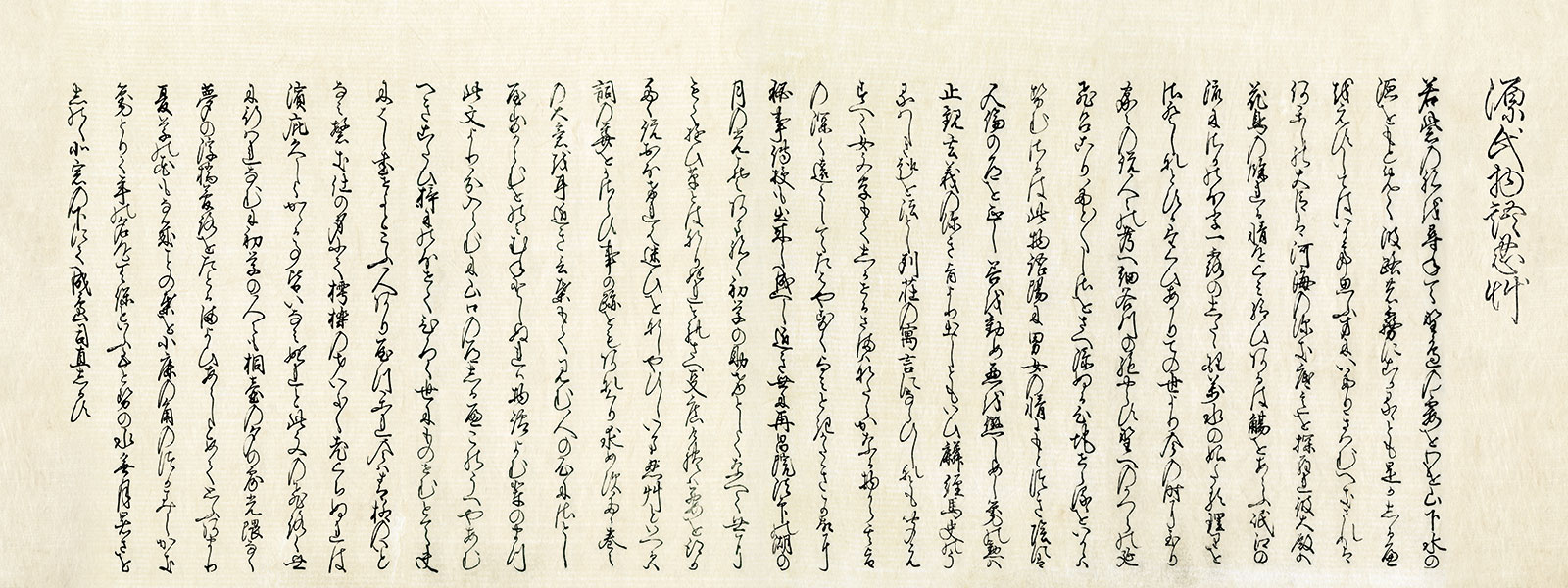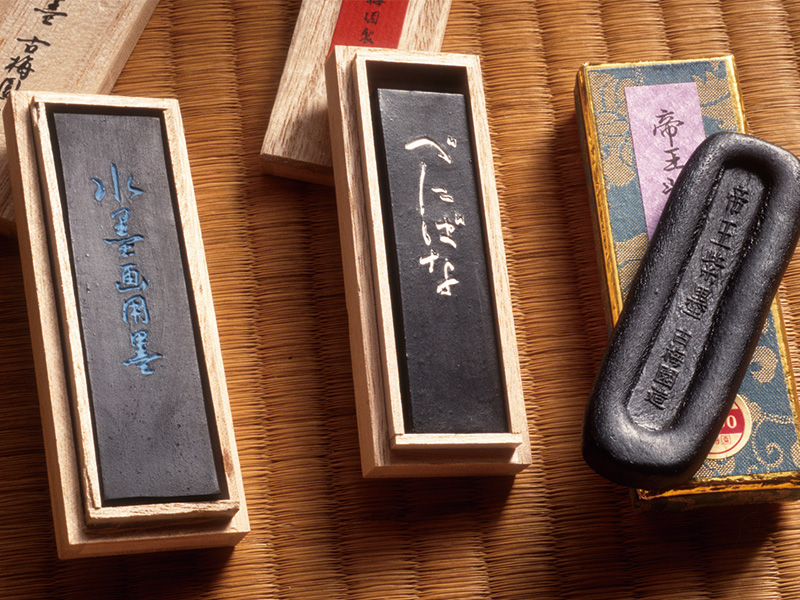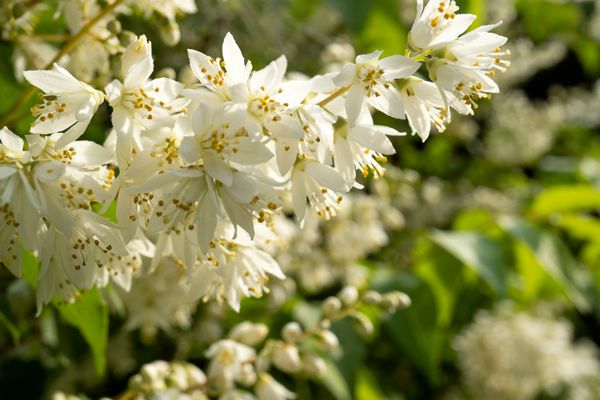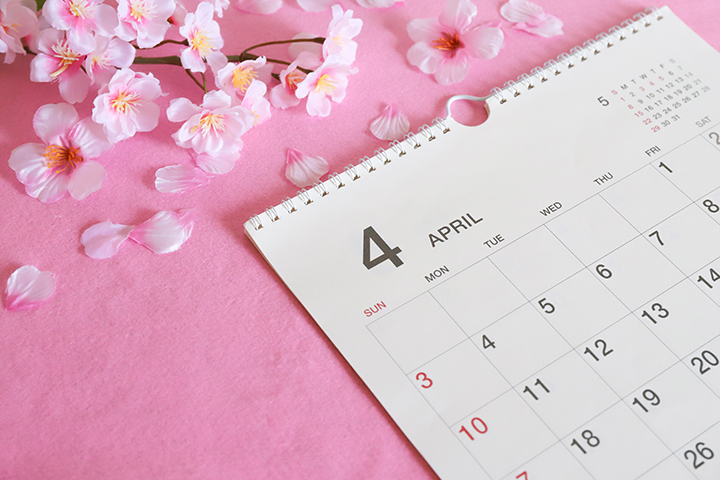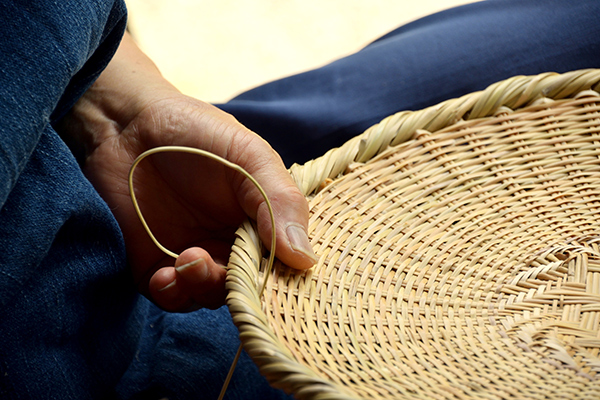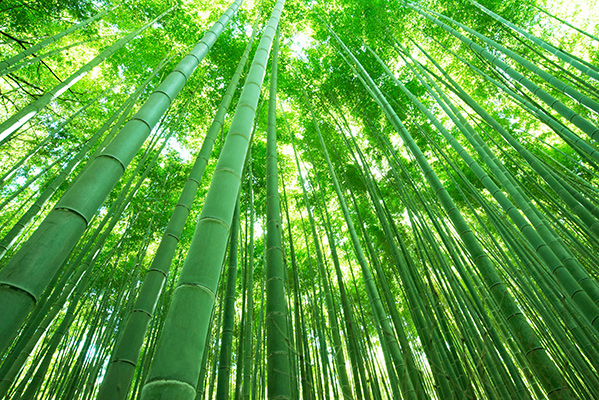Introduction One of Japan's representative traditional cultures is "Shodo" (calligraphy). The characters written with brush and ink are graceful and beautiful, and today, they are highly regarded as an art form. Its popularity has even spread to the West. This article will trace the history of such "Shodo."
Established from China and Flourished in the Asuka Period
The origin of Shodo is ancient China. There are various theories, but it is believed that it was introduced to Japan in the late fourth century, during the Yayoi period, along with the culture of Chinese characters. However, at first, there was no habit of writing characters to convey information. In the Asuka period, with the introduction of Buddhism from China, the techniques of brush, ink, and paper making were also introduced, leading to the development of "Shakyo" (sutra copying). The "Hokke Gisho," a commentary on the Lotus Sutra said to have been written by Prince Shotoku, is considered the oldest extant calligraphic work in Japan.
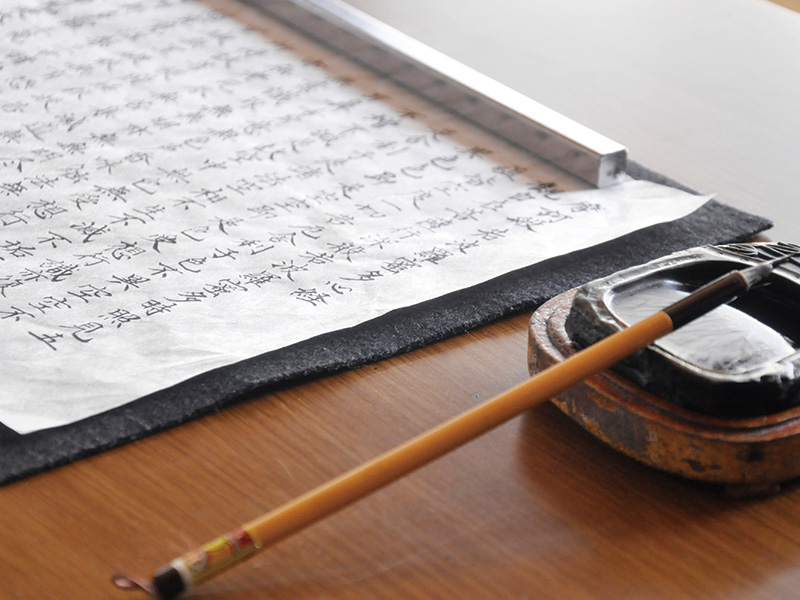
Eventually, in the Heian period, "Manyogana," a system of using Chinese characters to represent the sounds and meanings of Japanese, was born. Fujiwara no Yukinari, Ono no Michikaze, and Fujiwara no Sari are known as "Nosho-ka" (expert calligraphers) with advanced skills and knowledge in calligraphy, and they are said to have greatly influenced the history of Shodo in Japan. Among them, Fujiwara no Yukinari is also known for transcribing the famous work "The Tale of Genji" written by Murasaki Shikibu.

Furthermore, in the mid-Heian period, the prohibition of women learning Chinese characters led to the creation of "Kana" characters unique to Japan. The development of Kana characters greatly contributed to the advancement of Japanese literature. During this time, the expressive styles of "Gyosho" (semi-cursive script), which writes characters in a flowing, soft style, and "Kaisho" (standard script), which writes characters in a readable, balanced, and straight style, were also introduced to Japan. Notable calligraphic works from the Heian period by figures such as Kukai, the founder of the Shingon sect, and Saicho, the founder of the Tendai sect, still remain and are carefully preserved in temples. Incidentally, Japan has a long-standing custom of "Kakizome," where people write their aspirations and wishes for the new year, which is said to have originated from the "Kissho Hajime" held at the imperial court during the Heian period.
As time progressed, Shodo continued to evolve. During the Kamakura period, a writing system combining Chinese characters and Kana emerged. In the Muromachi period, Shodo further developed, and various schools of calligraphy were established. Among them, the "Sesonji School," which followed the tradition of Fujiwara no Yukinari, was particularly influential. For the nobility and samurai of the time, calligraphy was considered an essential part of their education. With the rise of the tea ceremony, the practice of displaying calligraphy (hanging scrolls) in the alcove (tokonoma) for appreciation also began.
It is said that Shodo became widespread among the common people from the Edo period onwards. Children learned to read and write at temple schools. The custom of Kakizome, writing one's aspirations for the new year, also became common during this period.
Shuji, Shosha, and Shodo: What is the Difference?
Many of you might have attended "Shuji" (penmanship) classes as children. Additionally, Japanese elementary and middle schools have "Shosha" (writing) classes. Both involve writing characters with brush and ink on paper, similar to Shodo, but they have different meanings. "Shuji" literally means learning characters. The goal of Shuji is to write neat characters with correct stroke order, paying attention to elements like "tome" (stop), "hane" (hook), and "harai" (sweep). "Shosha" also means writing characters, but it focuses on copying characters beautifully by following a model, similar to Shuji. On the other hand, "Shodo" has no strict rules. The purpose of Shodo is to express oneself freely and uniquely using brush and ink.
The Unique Japanese Aesthetic in Shodo
Shodo is not just about writing characters; it is an art form that expresses the rich individuality and creativity of each calligrapher. The tools used are simple—brush, ink, and paper—but this simplicity allows for infinite possibilities. The size and arrangement of the characters, the use of the brush to create varying shades of ink, and the different qualities of the lines all come together to embody a unique aesthetic in each piece of calligraphy. In Japan, there is a concept known as "the beauty of empty space," where intentionally leaving blank spaces or "ma" and "yohaku" invites the viewer's imagination. Conversely, densely written characters can convey the intense emotions of the calligrapher.
Many people say they do not know how to appreciate calligraphic works or cannot read them. In such cases, try to find pieces that you feel are beautiful or appealing, much like how you would appreciate a painting. Additionally, it can be enjoyable to imagine what the calligrapher is trying to express, considering the balance of the characters, the spacing between lines, and the use of ink shades. Learning Shodo not only helps you write beautiful characters but also cultivates concentration and mental strength, improves posture, and can be a fantastic way to relieve stress. It is highly recommended as a leisure activity.
Summary
As a side note, in Taiwan, there is a custom during the Lunar New Year called "Chunlian," where auspicious phrases are written on red paper and pasted on doors and entrances. This tradition is somewhat similar to Japan's Kakizome and Kadomatsu, blending into a unique New Year culture in Taiwan. You can also see Chunlian in Chinatowns and authentic Chinese restaurants in Japan, so be sure to check them out.


